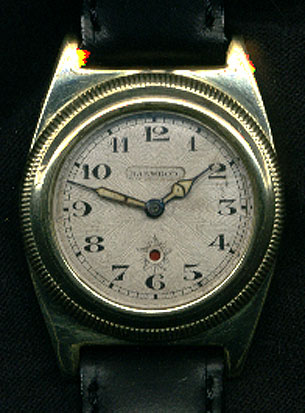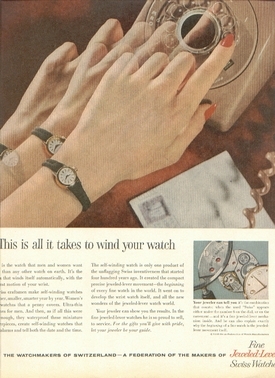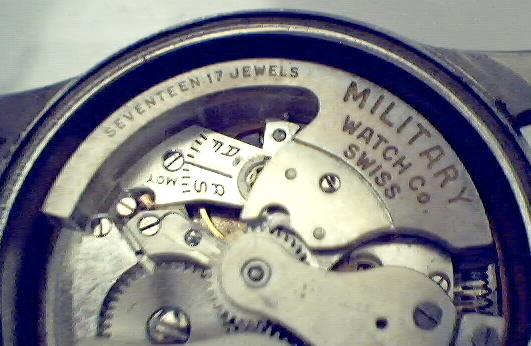There's a lot to be said about autos, here is just a little. Above is a bumper automatic movement. The sickle-shaped weight stamped "Military" is the rotor. It moves back and forth, and is connected centrally to a sort of axle. By moving back and forth, it winds the mainspring. To the right, you can see one of the fixed springs which cushion the rotor as it comes around. This can cause a tactile sensation to the wearer, as the rotor smacks into spring. I really like the bumper auto.
Abraham Louis Perrelet built the first self-winding watch, a pocket watch, in 1770. The watch at left is called "Perpetuale," from 1890. The hammer on the left was said to have wound the movement.





